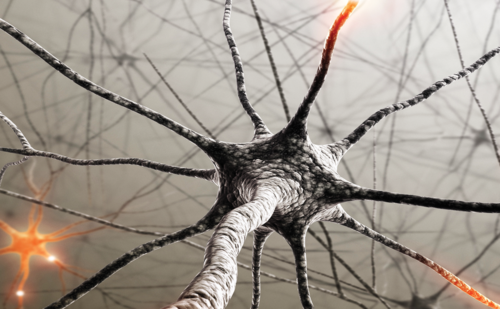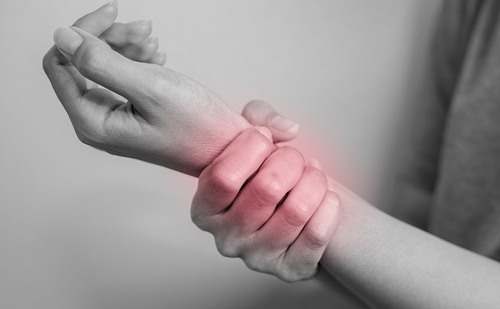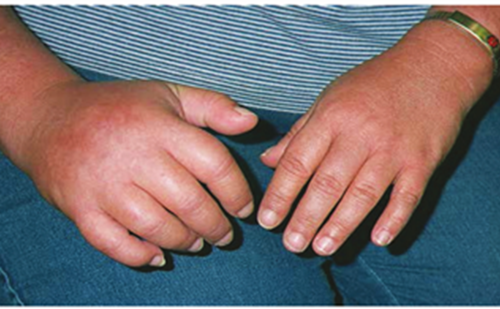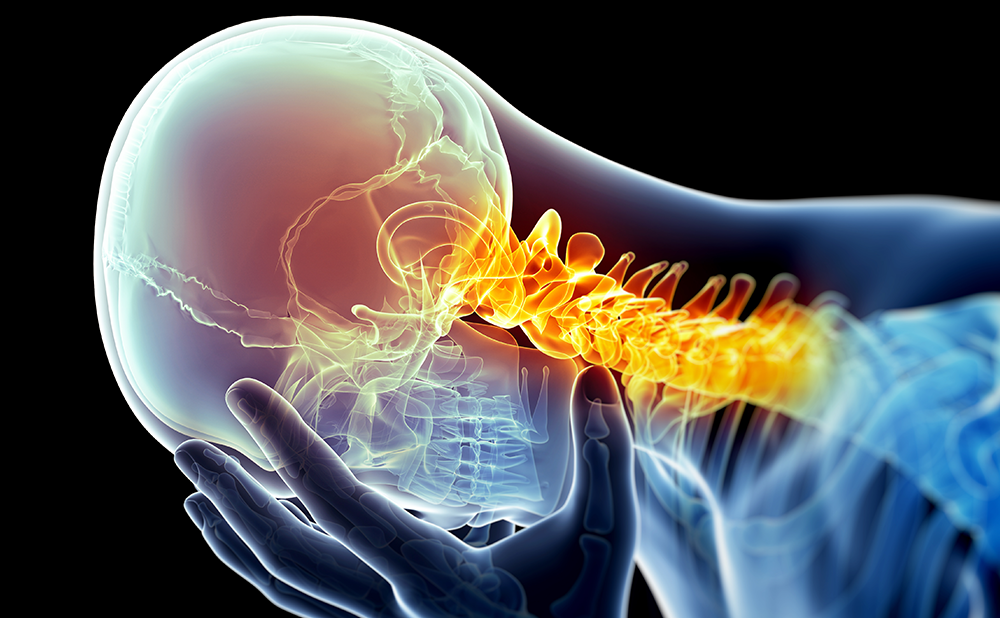Diabetic neuropathy is the most common neuropathy in industrialised countries. Considering that diabetes affects an estimated 177 million people worldwide (World Health Organization (WHO) 2002), more than 20 million people suffer from diabetic neuropathy with a remarkable range of clinical manifestations.1 More than 80% of the patients with clinical diabetic neuropathy have a distal symmetrical form of it that progresses following a fibre-length-dependent pattern, with predominant sensory and autonomic manifestations. In the other diabetic neuropathy patients, and usually in association with symptomatic or latent distal symmetrical sensory polyneuropathy, focal and multifocal neuropathy may develop that includes cranial nerve involvement, limb and truncal neuropathies and proximal diabetic neuropathy (PDN) of the lower limbs. This group of neuropathies tends to occur in both men and women over 50 years of age, most with long-standing insulin-dependent diabetes mellitus (IDDM) or non-insulin-dependent diabetes mellitus (NIDDM).
Besides the clinical pattern of the neurological deficit, a major difference exists between the common length-dependent diabetic polyneuropathy (LDDP) and focal or multifocal neuropathies that occur in diabetic patients. The LDDP does not show any trend to improve and either progresses relentlessly or remains relatively stable over years. Conversely, the focal diabetic neuropathies may relapse, but their course remains self-limited. In this article, the author reviews the clinical and pathological aspects of diabetic neuropathies associated with inflammatory phenomena.
Focal and Multifocal Diabetic Neuropathy
PDN of the Lower Limbs
Diabetic patients, usually over the age of 50, may present with PDN of the lower limbs characterised by a variable degree of pain and sensory loss associated with proximal muscle weakness and atrophy. This syndrome, originally described by Bruns and then by Garland,2,3 has also been reported under different names.4–11 The neurological picture is usually unilateral. Clinically, the patterns and the course of PDN strikingly differ from those of LDDP. In the University Hospital of Bicêtre’s study on PDN that included 27 patients, 24 with NIDDM and three with IDDM, the mean age at diagnosis was 62 years (range 46–71 years) and the male to female ratio was 16:11.8
Clinical Features of PDN
The onset of neuropathy can be acute or subacute. The patients complain of numbness or pains of the anterior aspect of the thigh, often of the burning type, worse at night and by contact. Difficulty in walking and climbing stairs is common due to weakness of the quadriceps and iliopsoas muscles. In fatter patients, early muscle wasting is often easier to palpate than to see. The patellar reflex is decreased or more often abolished. In most cases, the syndrome progresses over weeks or months, then stabilises and spontaneous pains decrease, sometimes rapidly. Approximately one-third of the patients experience a definite sensory loss over the anterior aspect of the thigh and the others a painful contact dysaesthesia in the distribution of the cutaneous branches of the femoral nerve, without definite sensory loss. Another cause, such as mechanical or malignant, must always be excluded before concluding that the neuropathy is related to diabetes.
In most cases, the patient’s condition improves after months, but sequelae – including disabling weakness and amyotrophy, sensory loss and patellar areflexia – are common. In a survey of long-term follow-up of up to 14 years, recovery began after a median interval of three months (range one to 12 months). The first improvement was decreased pain, resolution beginning within a few weeks and being almost complete by 12 months. Residual discomfort in the patients may take up to three years to subside.9 On the other hand, relapses are common, sometimes in spite of good diabetic control. In one-fifth of the patients that the University Hospital of Bicêtre investigated for this syndrome, relapses occurred within a few months. Thus, the clinical features of PDN, with frequent motor involvement, asymmetry of the deficit and gradual, yet often incomplete, spontaneous recovery, differ markedly from those of LDDP in which the sensory deficit is associated with motor signs only in extreme cases and in which symptoms virtually never improve spontaneously.
Pathological Aspects of PDN
In a morphological study of biopsy specimens of the intermediate cutaneous nerve of the thigh (a sensory branch of the femoral nerve that conveys sensations from the anterior aspect of the thigh, a territory commonly involved in PDN) it was found that the pathology of proximal nerves varied with the clinical aspects of the neuropathy.9,12 In patients with the most severe sensory and motor deficit, examination of the biopsy specimen revealed lesions characteristic of severe nerve ischaemia, including total axon loss in two patients and centrofascicular degeneration of fibres in one, following a pattern observed in nerve ischaemia. Lesions of nerve fibres co-existed with occlusion of perineurial blood vessels, as reported in the only detailed post-mortem study of PDN available in which the authors found a small infiltration with mononuclear cells associated with the occlusion of an interfascicular artery of the obturator nerve in a diabetic patient with proximal and distal deficit of the left lower limb.12
In a patient of the University Hospital of Bicêtre’s series who developed a rapid, asymmetrical, distal, sensorimotor deficit shortly after the onset of the proximal deficit, recent occlusion of a perineurial blood vessel and perivascular, perineurial and subperineurial inflammatory infiltration with mononuclear cells were demonstrated, along with axonal degeneration of the majority of nerve fibres of the superficial peroneal nerve.9 Mixed, axonal and demyelinative nerve lesions were associated with increased endoneurial cellularity made of mononuclear cells that suggested the presence of a low-grade endoneurial inflammatory process in four of them. In a recent study of patients with extremely painful PDN, the University Hospital of Bicêtre found similar inflammatory lesions with B- and T-lymphocytes mixed with macrophages.12
Multifocal Diabetic Neuropathy
Multifocal diabetic neuropathy (MDN) is characterised by successive or simultaneous involvement over weeks or months of roots and nerves of the lower limbs, the trunk and the upper extremities. In a recent study of 22 diabetic patients with MDN – for which other causes of neuropathy were excluded by appropriate investigations, including biopsy of a recently affected sensory nerve – three patients had a relapsing, the others an unremitting subacute-progressive course.13 Painful multifocal sensory-motor deficit progressed over two to 12 months.14 Distal lower limbs were involved in all patients, unilaterally in seven, bilaterally in the others, with an asynchronous onset in most cases. In addition, proximal deficit of the lower limbs was present on one side in seven patients, on both sides in six. Thoracic radiculoneuropathy was present bilaterally in two patients, unilaterally in one.15 The ulnar nerve was involved in one patient, the radial nerve in two. The cerebrospinal fluid protein ranged from 0.40g/litre to 3.55g/litre (mean: 0.87g/litre). Electromyography (EMG) showed an axonal pattern in all cases. MDN is comparable with the lumbosacral radiculoplexus neuropathy,16 which can actually involve territories beyond the lumbosacral area. It is also obvious that multifocal neuropathy or lumbosacral radiculoplexopathy is not specific to diabetic patients, which stresses the need to exclude other causes of neuropathy in this setting, including a superimposed cause in diabetic patients, such as necrotising arteritis or chronic inflammatory demyelinating polyneuropathy, which may require specific treatment.17
Pathological Aspects of MDN
Asymmetrical axonal lesions were present in all nerve specimens of patients with MDN. The mean density of myelinated and umyelinated axons was reduced. On teased fibre preparations, 33% of the fibres were at different stages of axonal degeneration while 7% showed segmental demyelination or remyelination. Necrotising vasculitis of perineurial and endoneurial blood vessels was found in six patients. Evidence of present or past endoneurial bleeding that included seepage of red cells, haemorrhage and/or ferric iron deposits were found in the majority of the specimens. Perivascular mononuclear cell infiltrates were present in the nerve specimens of 21 out of 22 patients, prominently in four patients (see Figure 1). In comparison, nerve biopsy specimens of 30 patients with severe LDDP showed mild epineurial mononuclear cell infiltrate in one patient and endoneurial seepage of red cells in one.13
Besides the high frequency of both endoneurial bleeding and inflammatory infiltrates, occlusion of small and medium-sized epineurial and perineurial arteries differentiate MDN from LDDP. The intensity and distribution of the lesions seemed more severe in MDN than in PDN but both patterns can be included in MDNs. The outcome is better in MDN than in DSP. Improvement occurs in all patients after a few months, but sequelae are common.
The relationship between the occurrence of inflammatory infiltrates, vasculitis and diabetes is not clear. Small inflammatory infiltrates have been occasionally encountered in sural nerve biopsy specimens of diabetic patients with neurological deficit and in autonomic nerve bundles and ganglia.18,19 The findings of the University Hospital of Bicêtre in a sensory branch of the femoral nerve has been confirmed by others.20 Lesions of nerve fibres and blood vessels due to diabetes may trigger an inflammatory reaction and reactive vasculitis in some patients; alternatively, diabetes may make the nerves more susceptible to inflammatory or immune processes. In both cases, lesions of epi- or perineurial blood vessels can induce ischaemic nerve lesions responsible for severe proximal sensory and motor deficits.
The role of inflammation in atherosclerotic lesions has been the subject of a number of investigations that have underlined the complexity of mechanisms involved. Endothelial alterations seem to be one of the most important triggering factors of inflammation in this setting, along with release of growth factors, cytokines and, especially, interleukin (IL)-12. These phenomena are associated with cellular reactions that include platelet activation and recruitment of white blood cells in the vessel wall.21 Alteration of vessel structures by diabetes may initiate the inflammatory process. In any case, subacute inflammation constitutes an important component of nerve and root pathology in a significant proportion of diabetic patients who manifest disabling neuropathy. Most importantly, the presence of inflammatory phenomena in the nerves in this setting makes these diabetic neuropathies treatable.
Treatment of Inflammatory Diabetic Neuropathies
Since the University Hospital of Bicêtre’s first observations of inflammatory lesions in nerve biopsy specimens of patients with focal or multifocal diabetic neuropathy, these patients were treated with corticosteroids. Most patients under the care of the University Hospital of Bicêtre had been referred by diabetologists, mainly because of painful neuropathy that was resistant to conventional treatments. Prednisone was used at the dose of 0.75mg/kg/day, with daily control of glycaemia. In patients already treated with insulin, the doses of insulin had to be adjusted. The majority of those on oral treatment for diabetes received insulin after the beginning of treatment with prednisone. Prednisone was maintained at full dose for six weeks, then gently tapered over three to six months on average. Pains disappeared within a few days after the beginning of prednisone treatment, but the course of motor involvement did not seem modified by prednisone. ■













